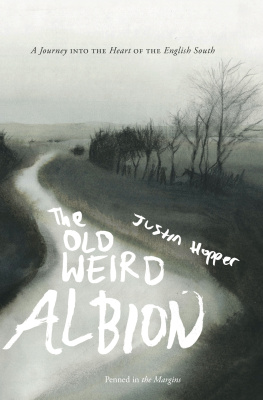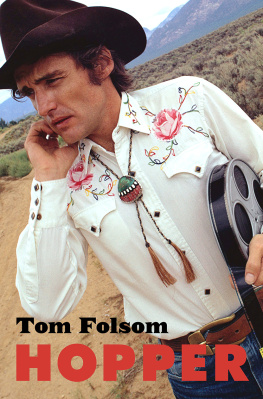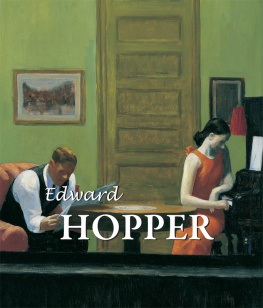Justin Hopper - The Old Weird Albion
Here you can read online Justin Hopper - The Old Weird Albion full text of the book (entire story) in english for free. Download pdf and epub, get meaning, cover and reviews about this ebook. year: 2017, publisher: Penned in the Margins, genre: Detective and thriller. Description of the work, (preface) as well as reviews are available. Best literature library LitArk.com created for fans of good reading and offers a wide selection of genres:
Romance novel
Science fiction
Adventure
Detective
Science
History
Home and family
Prose
Art
Politics
Computer
Non-fiction
Religion
Business
Children
Humor
Choose a favorite category and find really read worthwhile books. Enjoy immersion in the world of imagination, feel the emotions of the characters or learn something new for yourself, make an fascinating discovery.
- Book:The Old Weird Albion
- Author:
- Publisher:Penned in the Margins
- Genre:
- Year:2017
- Rating:3 / 5
- Favourites:Add to favourites
- Your mark:
- 60
- 1
- 2
- 3
- 4
- 5
The Old Weird Albion: summary, description and annotation
We offer to read an annotation, description, summary or preface (depends on what the author of the book "The Old Weird Albion" wrote himself). If you haven't found the necessary information about the book — write in the comments, we will try to find it.
The Old Weird Albion — read online for free the complete book (whole text) full work
Below is the text of the book, divided by pages. System saving the place of the last page read, allows you to conveniently read the book "The Old Weird Albion" online for free, without having to search again every time where you left off. Put a bookmark, and you can go to the page where you finished reading at any time.
Font size:
Interval:
Bookmark:

THE OLD WEIRD ALBION
Justin Hopper is a writer concerned with landscape, memory and myth. His journalism, poetry, audio projects and curated exhibitions have appeared in both his native USA and adopted UK home. He lives in Constable Country with his partner and their son.
Mairead Dunne ( ILLUSTRATOR ) is an artist and illustrator based in the UK, having completed a MA in Fine Art and MA in Authorial Illustration. Working across a wide variety of mediums, she won the Michael Marks Illustrated Poetry Award 2016 for her work on the clearing , published by Atlantic Press.

PUBLISHED BY PENNED IN THE MARGINS
Toynbee Studios, 28 Commercial Street, London E1 6AB
www.pennedinthemargins.co.uk
All rights reserved
Justin Hopper 2017
The right of Justin Hopper to be identified as the author of this work has been asserted by him in accordance with Section 77 of the Copyright, Designs and Patent Act 1988.
This book is in copyright. Subject to statutory exception and to provisions of relevant collective licensing agreements, no reproduction of any part may take place without the written permission of Penned in the Margins.
First published 2017
E-book published 2019
ISBN: 978-1-908058-37-9
ePub ISBN: 978-1-908058-75-1
This book is sold subject to the condition that it shall not, by way of trade or otherwise, be lent, re-sold, hired out, or otherwise circulated without the publishers prior consent in any form of binding or cover other than that in which it is published and without a similar condition including this condition being imposed on the subsequent purchaser.
for Thomas
The Old
Weird
Albion

Landscape, Memory, Myth
ONCE THERE WAS A WOMAN who stood at the edge of a cliff. It was a sunny midsummers Friday; a strong breeze brushed her skirt and troubled her hat. She looked out over the sea towards the south and an eternal, sun-drenched horizon. The woman had traveled all day to arrive at this place: a bus, a train, a walk alone to the cliff from the railway station with her handbag, her hat and little else. Boarding the train or walking up the hillside she still, instinctively, reached out for a tiny hand there had been a child, now 18 months gone.
She looked down and saw the end of the land; recognized that she was an islander and that this horizon was the edge of her world. Perhaps she arrived at the cliffs edge without a plan. Perhaps she arrived at the edge, peered down the vertiginous strata at an archaeology of summer holidays and picnics; of traders, invaders and shipwrecks; of loves and losses and wanderings and home, and could go on no more.
In the blue haze of a summer afternoon, the green of the Downs rolling gently away from the white of the chalk, the cliff appeared peaceful. But it is the site of a crash, where the sine wave of an Old Road ceases to undulate and ceases to be. There are murmurs there, creaks and groans and wind whistles.
Once there was a woman who stood at the edge of a cliff, and when, finally, she let slip, she did not do so unseen. Holidaymakers and wandering locals watched in horror as she flew through the air and skipped along the jagged side until, 40 storeys below, she struck a ledge in the cliff. There, her body broken and torn, she hovered above the crash of blackened-blue waves on white chalk. There, she left a scar a scorch mark, such as all lives leave in the landscape when they streak across it, or explode within.
At the edge
The cliff was Beachy Head, near Eastbourne in Sussex. A 500-foot-tall lump of chalk peering out over the English Channel, Beachy Head holds a grim place in the English imagination, being one of Europes most famous suicide spots. The woman was Doris Hopper, first wife of my grandfather, Bob Hopper. There is no word for the relationship Doris and I have me, the product of her widowed husbands second marriage to a woman Doris never met. A few years ago I didnt even know for certain she had existed. No one I could speak to knew her name. And yet, 80 years after she went over that cliff, I felt compelled to seek out the traces of her life and death.
I did so by walking. I walked the South Downs Way, the 100-mile footpath that stretches between central Hampshire and the English Channel at Beachy Head. The Downs elevated rolling grassland, from the Old English word for hills, dun form a naturally occurring pathway just north of the sea through West and East Sussex. I wish I could say that I had walked from Winchester to Beachy Head in a straight line, day after day, but thats not how it was; thats not how life works. The walks in this book took place over several years, some before I moved to England from my home in the northeastern USA, some after I had arrived and my son, Thomas, had been born. His birth added a new impetus to my quest: the need to understand Doris, who is a part of his family story, too; but more importantly, the need to understand England, the place he calls home.
Wanting to believe
This book tells the stories I encountered on my incursions into the Downs in the manner of nonfiction. But it is not journalism. It is a series of impressions that describe ways of relating to the landscape that both rely on and empower memory as an instrument of comfort. Sometimes thats through art or story, sometimes ritual or even magic. I will introduce you to the guides who showed me the paths and their meanings some are living, many are long dead. They are all real people, although I have changed the names of some of them. The places and experiences are all true, but in a few instances more than one visit to the same location has been condensed into a single description.
In the course of these wanderings, I read the South Downs as a core sample of another England. In this alternative zone that exists side by side with the modern world, the linear nature of time is not assured. There are places in the landscape that exude what might be called the everywhen; they are haunted places. And ghosts require a little faith.
I grew up atheist in 1970s and 80s America, surrounded and fascinated by fanaticism. Just as many friends raised in the Church turned their backs on Catholicism or Methodism, I bristled against my parents lack of religion, desperate to believe. At the same time, throughout my childhood, my father took us to England to Steyning in West Sussex, where my grandparents lived and we would walk on the Downs. At some point these two childhood experiences converged. I began to look to the landscape for faith: I believed in its pull and its power. As I walked the Downs many years later, I was looking to experience that feeling again. I wanted to believe.
In the chapters that follow, I have sought out places where landscape intersects with memory and myth. Why do people find comfort in such sites? Doris was drawn to Beachy Head as though some answer was embedded in the landscape. When someone disappears, when someone leaps from a cliff and is all-but-erased from memory, what traces might we find in the crumbling chalk of the cliff-face; in the wind that buffets the edge of this Albion?

Font size:
Interval:
Bookmark:
Similar books «The Old Weird Albion»
Look at similar books to The Old Weird Albion. We have selected literature similar in name and meaning in the hope of providing readers with more options to find new, interesting, not yet read works.
Discussion, reviews of the book The Old Weird Albion and just readers' own opinions. Leave your comments, write what you think about the work, its meaning or the main characters. Specify what exactly you liked and what you didn't like, and why you think so.











